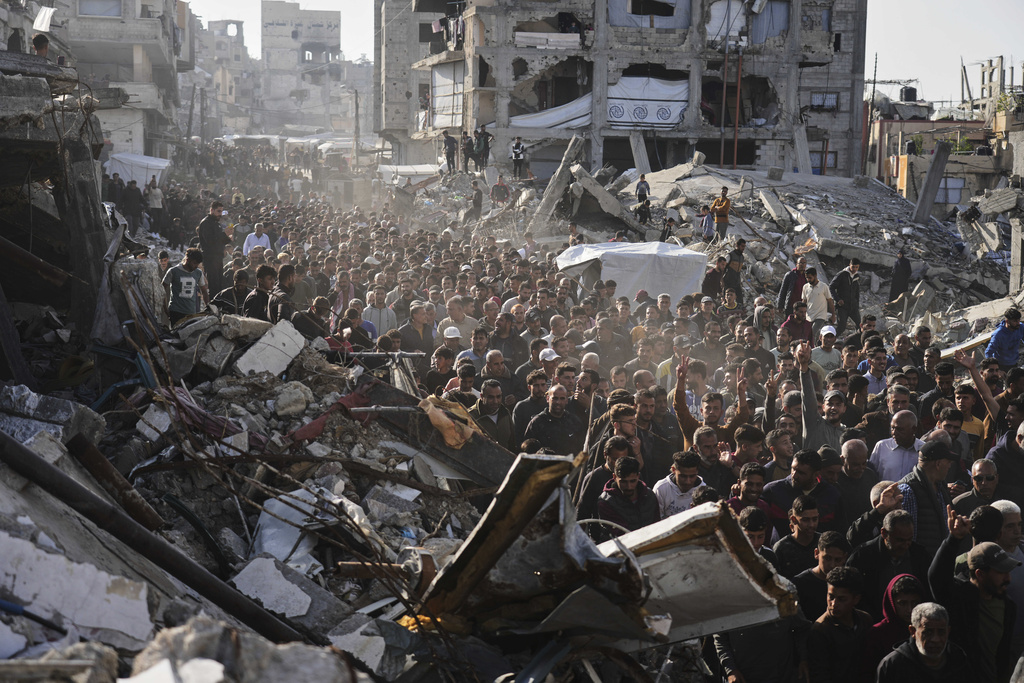In a quick second White House visit, the Israeli prime minister and President Donald Trump covered a broad range of topics yesterday. Netanyahu emerged from the meeting talking about trade, his eagerness to eliminate the U.S. trade deficit with his country and any other “trade barriers” that may exist.
That may seem to line up with the dominant news of the weekend, but it’s not likely the two world leaders spent most of their time discussing trade, Chris Mitchell, Middle East bureau chief for CBN, said on Washington Watch later in the day.
Israel has increased operations in Gaza since a shaky ceasefire with Hamas fell apart. The Iran-backed terror group is still believed to hold 24 hostages presumed to be alive, The Times of Israel reports.
Instead – according to Mitchell – another Netanyahu visit to Washington after having been there less than two months ago could mean a strike against Iran, from Israel or from a joint Israel-U.S. assault, is near.

The timing of Netanyahu’s visit could mean that talks are “very sensitive and significant and likely revolving around what the U.S. and Israel will do with Iran and its nuclear sites,” Mitchell told show host Tony Perkins. “Will they attack, or will they delay it, or will there actually be direct or indirect talks with Iran over its nuclear program?”
Trump in early March sent a letter to Ali Khamenei, Iran’s Supreme Leader, aimed at talks about Iran’s rapidly advancing nuclear program. News of the letter came to light during a Fox Business Network interview and quickly made the rounds in the U.S.
Iran, however, gave no official response until three weeks later when its president, Masoud Pezeshkian, said in televised cabinet meeting remarks that his country would not have direct negotiations with the U.S. but left the door open for mediated conversations.
“We don’t avoid talks; it’s the breach of promises that has caused issues for us so far,” Pezeshkian said. “They must prove that they can build trust.”
In 2018 Trump, then in his first term, withdrew America from a Barack Obama-negotiated Iranian nuclear deal.
The U.S. is currently involved in attacks against the Iran-backed Houthis in the Red Sea off the coast of Yemen.
No more patience with Iran
Netanyahu’s second White House visit could be connected to Trump’s late March comments when he threatened a bombing of Iran.
He told NBC News on March 30 that U.S. and Iranian officials were “talking,” and “there will be bombing. It will be bombing the likes of which they have never seen before” if Iran and the U.S. can’t come to a nuclear agreement.
 “The U.S. is making it clear that Iran has to eliminate its nuclear program, whether that [is] voluntarily or through a military strike remains to be seen,” Mitchell said.
“The U.S. is making it clear that Iran has to eliminate its nuclear program, whether that [is] voluntarily or through a military strike remains to be seen,” Mitchell said.
According to media reports, Netanyahu’s return visit was scheduled with just a few days’ notice.
Mitchell speculated: “Perhaps this meeting has to do with plans to have a joint U.S.-Israeli strike; or maybe it's the Israelis who really want to make sure that President Trump doesn't get bogged down in endless negotiations, and there's a date certain to when these talks may end.”
While the Netanyahu visit could be one indicator of a looming joint strike against Iran, another could be military build-up in the region. The U.S. has sent B-2 bombers and B-52 bombers, Mitchell noted.
“You have two carrier strike groups in the region, and a third on the way, so the military assets are just getting more and more here in the region. You would think this is going to be a joint strike,” he opined.
The U.S. B-2s carry the Massive Ordnance Penetrator (MOP) bombs, also known as the “bunker busters,” which are necessary to reach Iran’s deeply buried and fortified nuclear targets. Each B-2 carries two MOPs.
A new “smart fuze” has improved the effectiveness of the MOPs even when the exact depth and positioning of a buried target is not fully known.
 “With the B-52s added to what Israel can bring with its F-35s, it looks like a pretty formidable attack against these nuclear sites, which are spread throughout Iran purposely to avoid a single strike,” Mitchell explained.
“With the B-52s added to what Israel can bring with its F-35s, it looks like a pretty formidable attack against these nuclear sites, which are spread throughout Iran purposely to avoid a single strike,” Mitchell explained.
Finishing Hamas in Gaza
Netanyahu can’t turn his complete attention to Iran until the Hamas war is complete, and it looks now as though Israel is turning up the pressure against Hamas in Gaza.
Israel has announced the creation of new “security zones” in which it will seize large areas of Gaza, basically establishing a roughly 1-kilometer-wide buffer zone along the Gaza-Israeli border.
The move is expected to cut off Rafah from Khan Younis and give Israel control of a second axis in southern Gaza in addition to the “Philadelphia Corridor,” which runs along the border with Egypt and which Israel believes has been a key route for smuggling weapons into Gaza.
“This idea of security zones is really a bit of a game-changer here right now,” Mitchell said. “Israel is taking a much more determined stance against Hamas with this new military operation in the last few weeks.”














